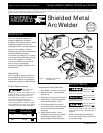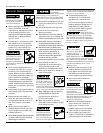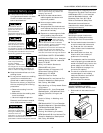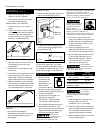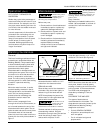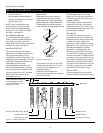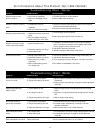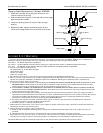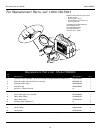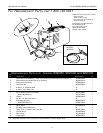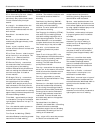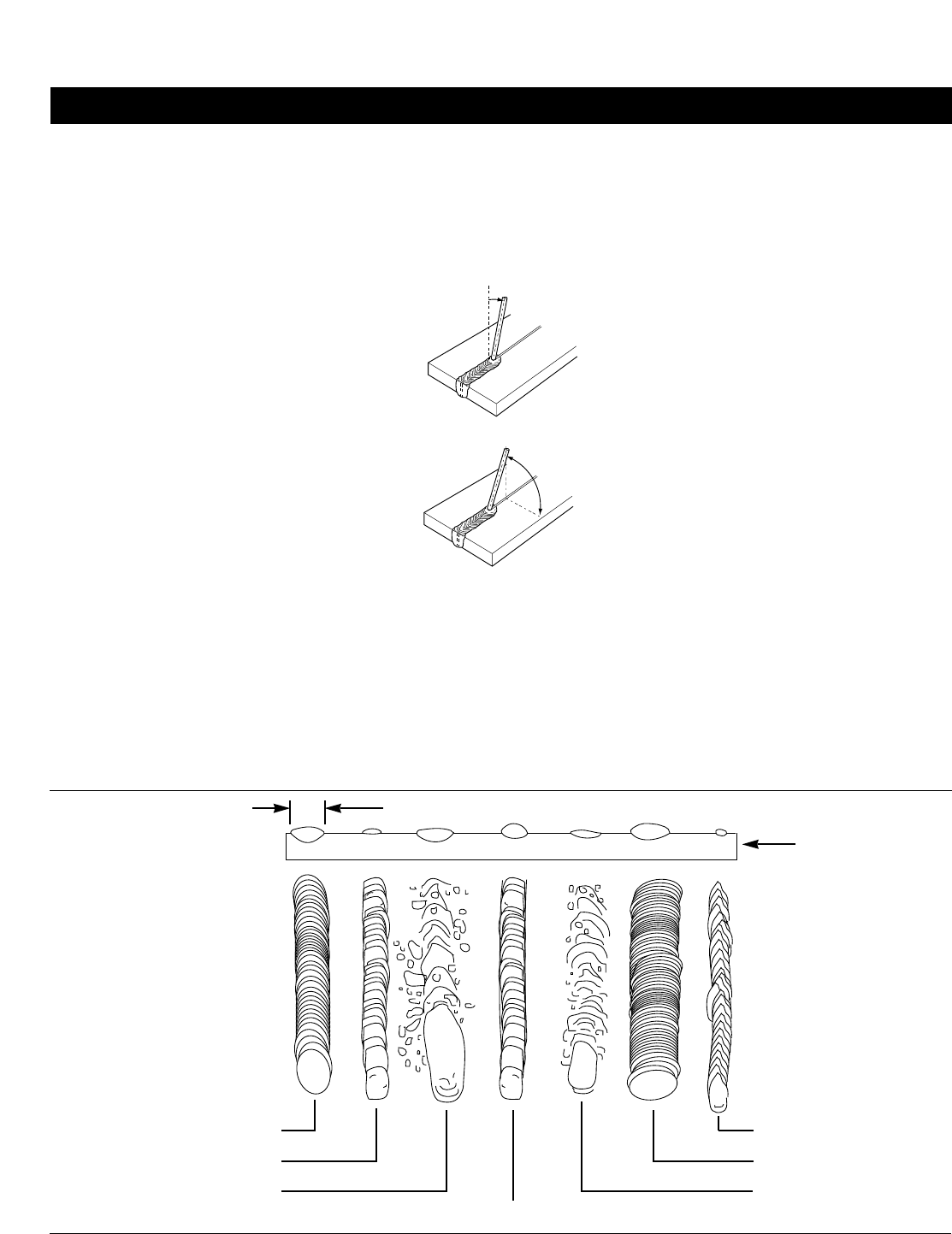
6
Shielded Metal Arc Welder
2. E-7014 FAST FILL
• Smooth bead and fast deposition
• Ideal for joints with poor fitup and
general repair work
NOTE: E-6011 and E-6018 are not
recommended for use with these
welders. Recommended electrode
diameter is 1/16” or 5/64”. Call (800)
746-5641 for availability.
Arc Welding Basics
Four basic techniques affect weld
quality. These are: amperage setting,
weld angle, arc length, and travel
speed. Proper use of these techniques is
necessary for good weld quality.
AMPERAGE SETTING
The correct amperage involves the
adjustment of the welding machine to
the required amp setting. This is
regulated by a knob on the welder. The
amperage required depends on the size
(diameter) of electrode used and the
thickness of the work piece.
Consult specifications listed on the
welder. Excessive amps burn through
light metals and the weld bead is flat
and porous (See Figure 10). The bead
appears high and irregular if the
amperage is too low.
WELD ANGLE
Weld angle is the angle at which the
electrode is held during the welding
process. Using the correct angle ensures
proper penetration and bead formation.
Electrode angle involves two positions -
travel angle and work angle (See Figure 9).
Travel angle is the angle in the line of
welding and may vary from 5º to 45º
from the vertical, depending on
welding conditions.
Work angle is the angle from
horizontal, measured at right angles to
the line of welding.
For most applications, a 45º travel
angle and 45º work angle is sufficient.
For specific applications, consult an arc
welding handbook.
NOTE: Right handed welders should
weld from left to right. Left handed
welders should weld from right to left.
The electrode should always point into
the weld puddle as shown.
ARC LENGTH
Arc length is the distance from the
work piece to the tip of the electrode,
the distance which the arc must travel.
A proper arc length is essential to
generate the heat needed for welding
(See Figure 10). An arc that is too long
produces an unstable arc, reduces
penetration, increases spatter, and
causes flat and wide beads. Too short
an arc does not create enough heat to
melt the work piece, the electrode has
a tendency to stick, penetration will be
poor, and uneven beads with irregular
ripples result. A proper arc should be
no longer then the diameter of the rod.
The sound of a proper arc is a steady,
crisp sizzle, similar to bacon frying.
TRAVEL SPEED
The travel speed is the rate at which
the electrode is moved across the weld
Welding Guidelines (Continued)
Normal Amps, Arc Length, Speed
Amperage Too Low
Amperage Too High
Arc Length Too Short
Arc Length Too Long
Speed Too Slow
Speed Too Fast
Workpiece
NOTE: Weld bead width (W)
should be approximately
twice the diameter fo the
electrode rod used.
W
Figure 10 - Weld Appearance
Figure 9 - Weld Angle
5
o
- 45
o
Travel Angle
Work Angle



